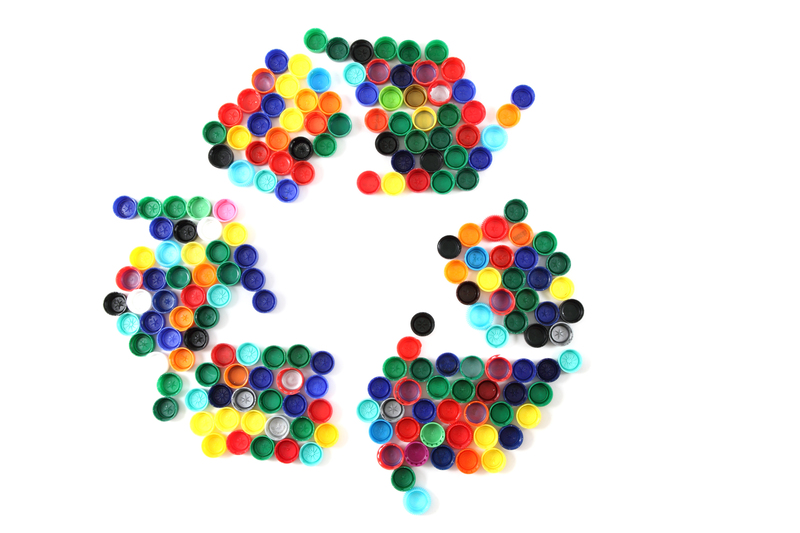How to Train Others on PPE Waste Disposal Best Practices
In the modern workplace, ensuring the safe and effective disposal of Personal Protective Equipment (PPE) waste has never been more crucial. Improper PPE waste disposal can lead to environmental harm, health hazards, and regulatory penalties. Training employees and colleagues on best practices for PPE waste management is an essential step for any organization looking to maintain safety, compliance, and environmental stewardship.

Why PPE Waste Disposal Training Matters
- Protects Human Health: Correct disposal prevents the spread of contaminants that could endanger public health or staff wellbeing.
- Ensures Regulatory Compliance: Staying up-to-date with government guidelines helps organizations avoid hefty fines and legal repercussions.
- Safeguards the Environment: Proper segregation and disposal reduces the risk of land and water contamination.
- Promotes a Culture of Responsibility: Training reinforces the organizational mindset of safety and accountability.
Key Concepts in PPE Waste Disposal
Before diving into training methods, it's vital to understand the main elements of PPE waste disposal best practices:
- PPE Waste Identification: Recognizing which materials are considered PPE (e.g., gloves, masks, gowns, face shields) and when they become waste.
- Segregation: Categorizing waste according to its type - hazardous, non-hazardous, recyclable, or reusable.
- Collection: Using designated, clearly-labeled collection bins strategically placed throughout the facility.
- Storage and Handling: Secure temporary storage before safe transport for treatment or final disposal.
- Disposal: Complying with local, state, and federal guidelines for the final disposal process.
Effective Strategies for PPE Waste Management Training
1. Know Your Audience
Think about whom you are training. Are they frontline workers, cleaning staff, supervisors, or management? Tailor your training to their education level, language ability, and job roles. This will help make the information accessible, relevant, and easy to comprehend.
2. Develop a Comprehensive Training Program
A thorough training program for PPE waste disposal should contain the following modules:
- Introduction to PPE Waste
- Definition and types of PPE
- Risks associated with improper disposal
- Regulatory Requirements
- Overview of OSHA, CDC, and EPA guidelines
- State and local regulations for PPE waste disposal
- Step-by-Step Disposal Procedures
- How to correctly remove PPE
- Proper waste bin usage and segregation
- Post-disposal hand hygiene
- Handling Specialized Waste
- Dealing with contaminated or sharp PPE items
- Procedures for chemical-exposed PPE
- Personal & Environmental Responsibilities
- Emergency Protocols (e.g., spills or accidental contact)
3. Use Multi-Modal Training Methods
*Deliver training using a variety of methods to reinforce key messages and increase retention*. Some top training techniques include:
- Classroom Sessions: Traditional in-person or virtual presentations.
- Hands-On Demonstrations: Show real waste bins, PPE, and disposal techniques.
- Video Tutorials: Visual representation of correct & incorrect disposal methods.
- Posters and Signage: Place clear, easy-to-read instructions near waste collection areas.
- Quizzes and Interactive Activities: Engage participants and verify understanding.
Step-by-Step Guide to Training Others on PPE Waste Disposal
-
Assess Training Needs
*Begin with a training needs assessment*. Evaluate the current knowledge level of your staff and identify any gaps in understanding about PPE waste disposal practices. Observation, interviews, and short quizzes can reveal misconceptions or risky habits.
-
Design Customized Training Materials
Develop simple, clear, and visually appealing training documents, such as:
- Step-by-step flowcharts for PPE waste handling
- Infographics on correct segregation
- Checklists for daily waste disposal duties
*Where possible, use the organization's own procedures and branding to reinforce the message*.
-
Deliver the Training
Choose the right setting and schedule to encourage participation. For high-risk environments, conduct initial training in small, socially distanced groups or through online platforms. Incorporate live demonstrations, Q&A sessions, and scenario-based role plays to reinforce learning.
-
Demonstrate Proper PPE Waste Disposal
Lead by example by showing each step in the disposal process. For instance:
- Carefully remove used PPE according to infection control protocols.
- Place the waste item into the correct, labeled bin (e.g., general, infectious, sharp).
- Close and seal the bin or bag when it is 3/4 full.
- Wash hands thoroughly after handling any PPE waste.
Encourage trainees to practice these steps until they feel confident.
-
Assess Understanding
After the training session, evaluate participants through quizzes, observation, and feedback sessions. Provide constructive feedback and additional instruction for those who need it.
Best Practices for PPE Waste Disposal - What to Emphasize
1. Always Use the Correct Bins
Bins should be:
- Clearly labeled--differentiate between general waste, medical waste, infectious waste, sharps, and recyclables.
- Color-coded according to national or organizational standards (e.g., red for infectious, yellow for clinical waste).
- Easily accessible, especially in areas of high PPE usage.
2. Avoid Cross-Contamination
- Never overfill bins or bags; seal and replace when they reach 3/4 capacity.
- Keep lids closed to prevent airborne contaminants.
- Use gloves and prevent direct hand contact with used PPE.
- Wash hands immediately after handling any PPE waste.
3. Stay Up-to-Date with Regulations
Laws and standards change frequently. Train employees to:
- Check for updated OSHA, EPA, CDC, and local health department guidelines regularly.
- Attend refresher courses at least annually.
- Know whom to contact with compliance questions.
4. Promote Environmental Responsibility
- Identify which PPE items can be recycled or reused, and establish clear guidelines.
- Ensure hazardous waste is sent to certified treatment facilities.
- Reduce waste through reuse when safe and compliant (for instance, reusable face shields with proper cleaning).
Overcoming Common Obstacles in PPE Waste Management Training
Implementing effective PPE waste disposal training may face several common challenges, including:
- Lack of Engagement: Keep training interactive and relevant. Include real-life stories and practical exercises to maintain attention.
- Language Barriers: Offer translated materials and visuals for non-native speakers.
- Limited Resources: Use online modules, printed infographics, and mobile-friendly communications when in-person training isn't feasible.
- Changing Guidelines: Appoint a compliance officer to monitor regulations and update training as required.
Measuring Training Success
The true effectiveness of your PPE waste disposal best practices training is only realized through careful measurement:
- Track incident reports related to improper waste disposal.
- Conduct spot checks or audits of bin usage and segregation.
- Gather feedback from employees--use surveys to learn where knowledge may still be lacking.
- Review compliance rates before and after training sessions.

Frequently Asked Questions About PPE Waste Disposal Training
How often should PPE waste disposal training be conducted?
Initial training should occur during employee orientation. Refresher sessions are recommended annually or whenever significant policy or regulatory changes occur.
Who is responsible for PPE waste disposal training?
Responsibility rests with:
- Environmental Health & Safety (EHS) teams
- Supervisors and Department Managers
- HR and Staff Training Coordinators
What should be included in PPE waste disposal training materials?
Effective training materials cover:
- The different types of PPE and associated waste
- Proper disposal methods and bin identification
- Contamination risks and personal hygiene protocols
- Reporting and emergency response procedures
How can organizations encourage adherence to PPE disposal best practices?
*Recognition, rewards, and clear communication* encourage participation. Visual cues (like posters and color-coded bins), regular reminders, and leadership by example reinforce good habits.
Conclusion: Building a Safer, Cleaner Tomorrow through PPE Waste Disposal Training
Effective PPE waste disposal goes far beyond just following rules; it's an essential part of workplace safety, environmental responsibility, and regulatory compliance. By training others in PPE waste management best practices, you protect both your team and the wider community.
Incorporating practical demonstrations, real-life scenarios, and ongoing measurement ensures your training is engaging and effective. As regulations and risks evolve, so should your training--keeping your workplace ahead of the curve in safety and sustainability.
Remember: Consistent, comprehensive, and hands-on training creates lasting behavior change. Start building your PPE waste disposal training program today and make a measurable difference in your organization's safety culture and environmental footprint.